Ever feel like you’re constantly racing against the clock, only to find that time has slipped through your fingers yet again? It’s a familiar sensation for many, akin to trying to catch sand with your bare hands. The modern world spins faster than ever, and keeping pace can seem impossible.
But why does it feel like there’s never enough time, and how can we shift this paradigm to regain control? In this exploration of time management, we’ll delve into the root causes of our perpetual time crunch and offer actionable strategies to reclaim those precious hours.
Understanding the Time Crunch
In today’s fast-paced society, it’s easy to feel as though time is perpetually slipping away. The demands of work, family, and personal commitments often leave us feeling overwhelmed and stretched thin.
This section seeks to uncover the reasons behind this universal struggle, examining both societal influences and personal habits that contribute to our constant race against the clock.
The Modern Dilemma: Why Time Feels Scarce
The feeling of scarcity around time is a hallmark of our modern era. With the rise of technology and the digital age, the expectation to be constantly available and responsive has skyrocketed.
Social media, emails, and instant messaging create a perpetual loop of communication, making it difficult to unplug. The hustle culture glorifies being busy, equating it with success, which only adds to the pressure.
Moreover, the 24/7 news cycle and the endless stream of information can make it hard to focus on what truly matters. We’re bombarded with data, and filtering through it requires time and mental energy that we often don’t have.
As a result, many of us are left feeling as though we’re always running out of time, even when our schedules are packed.

Common Causes of Time Shortage
Several factors contribute to the feeling of a perpetual time shortage. One major culprit is overcommitment. Many people say “yes” to more tasks and responsibilities than they can realistically handle, leading to a constant state of overwhelm.
Additionally, poor planning and a lack of prioritization can cause us to spend our time on less important tasks, leaving little room for what truly matters.
To combat overcommitment, practice saying “no” more often. Start by identifying your core priorities and aligning your commitments with them. This will help you focus on what truly matters and prevent you from spreading yourself too thin.
Another common issue is distractions. In our hyper-connected world, distractions are everywhere, from social media notifications to unexpected interruptions.
These can derail our focus and consume valuable time that could be better spent elsewhere. By recognizing these time thieves, we can begin to take steps to minimize their impact.

The Overcommitment Trap
Overcommitment is a silent saboteur in the realm of time management. It sneaks up on us, often disguised as ambition or the desire to please others.
However, consistently taking on too much can lead to burnout and a constant feeling of being behind. In this section, we’ll explore how to identify signs of overcommitment and learn to set boundaries effectively.
Recognizing Overcommitment in Your Life
Overcommitment often starts with good intentions. We want to help others, seize opportunities, and make the most of every moment. However, this eagerness can quickly spiral out of control.
If you find yourself frequently stressed, missing deadlines, or feeling guilty about unfinished tasks, you may be overcommitted. It’s crucial to recognize these signs early and take action to prevent further strain.
Reflect on your current commitments and assess whether they align with your long-term goals. Are there activities that drain your energy without adding value to your life? Identifying these can help you make more informed decisions about where to invest your time and energy.

How to Set Boundaries Effectively
Setting boundaries is essential for maintaining balance and avoiding the pitfalls of overcommitment. Begin by clarifying your priorities and understanding what truly matters to you.
Communicate your limits clearly to others, whether at work or in personal relationships. Remember, it’s okay to say “no” to requests that don’t align with your goals or values.
- Identify your top three priorities and focus on them.
- Practice saying “no” to tasks that don’t align with these priorities.
- Communicate your boundaries clearly and assertively.
When setting boundaries, use “I” statements to express your needs. For example, “I need time to focus on my work” is more effective than “You’re distracting me.” This approach helps communicate your boundaries without placing blame on others.
Distractions: The Silent Time Thieves
Distractions are the sneaky culprits that steal our time without us even realizing it. They lurk in every corner, from the buzzing of a smartphone to the allure of an open browser tab. Understanding these time thieves and implementing strategies to minimize their impact is crucial for effective time management.
Identifying Your Distractions
Distractions come in many forms, both external and internal. External distractions include noise, interruptions, and digital notifications, while internal distractions can be thoughts, emotions, or daydreams.
To identify your distractions, start by observing your daily habits and noting when and where you lose focus. Are there specific triggers or patterns that lead to distraction?
Once you’ve identified your distractions, you can take proactive steps to address them. This might involve creating a designated workspace, using tools to block digital interruptions, or practicing mindfulness to stay present. By understanding the nature of your distractions, you can develop strategies to reduce their impact.

Strategies to Minimize Distractions
Minimizing distractions requires a combination of discipline and strategy. One effective approach is to set specific times for checking emails and social media, rather than allowing them to interrupt your workflow. Creating a dedicated workspace that’s free from clutter and noise can also help improve focus.
| Strategy | Implementation |
|---|---|
| Use time-blocking | Allocate specific time slots for tasks and stick to them. |
| Limit digital interruptions | Use apps or settings to silence notifications during work hours. |
| Practice mindfulness | Incorporate short meditation sessions to enhance focus and awareness. |
To enhance focus, consider implementing the Pomodoro Technique. This method involves working in short, focused bursts followed by brief breaks. It’s an effective way to maintain concentration and prevent burnout.
Mastering Time Management
Achieving mastery over your time is not just about squeezing more tasks into your day; it’s about making deliberate choices that align with your goals and values. By employing practical productivity tips and crafting a balanced schedule, you can create a more fulfilling and efficient daily routine.

Practical Productivity Tips for Everyday Life
Productivity is often mistaken for mere busyness, but true productivity is about working smarter, not harder. One key tip is to prioritize tasks using the Eisenhower Matrix, which helps you distinguish between what’s urgent and what’s important.
This allows you to focus on high-impact activities rather than getting bogged down by trivial tasks.
Another valuable tip is to batch similar tasks together. By grouping similar activities, such as answering emails or making phone calls, you can reduce the cognitive load of constantly switching tasks. This can significantly enhance your efficiency and reduce the mental fatigue that comes from multitasking.
Creating a Balanced Schedule
A balanced schedule is one that harmonizes work, rest, and play. To achieve this, start by mapping out your ideal day, incorporating time for work, relaxation, and personal pursuits. Be sure to include buffer periods to accommodate unexpected events or delays. This flexibility can prevent stress and allow for a more adaptable routine.
Regularly review and adjust your schedule to ensure it remains aligned with your evolving goals and priorities. This ongoing process of reflection and adjustment can help you maintain a sense of balance and purpose in your daily life.

Building Better Habits for Time Mastery
Habits are the foundation of effective time management. By cultivating habits that support your goals, you can streamline your routine and make better use of your time. Establishing a routine that works for you and incorporating mindfulness into your daily practices are key components of building better habits.
Establishing a Routine That Works for You
Creating a routine tailored to your unique needs and lifestyle is essential for maximizing productivity. Start by identifying your peak productivity times—those moments in the day when you feel most alert and focused. Schedule your most demanding tasks during these periods to capitalize on your natural energy levels.
It’s also important to incorporate regular breaks into your routine. Short breaks can help recharge your mental energy and prevent burnout. Experiment with different break intervals to find what works best for you, whether it’s a quick walk, a short meditation session, or simply stepping away from your workspace.

The Role of Mindfulness in Time Management
Mindfulness can be a powerful tool for enhancing time management. By cultivating awareness of the present moment, you can improve focus and reduce the impact of distractions. Practicing mindfulness doesn’t require extensive time; even a few minutes a day can make a significant difference.
Incorporate mindfulness practices into your daily routine, such as deep breathing exercises, mindful eating, or a brief meditation session. These practices can help you stay grounded and centered, making it easier to manage your time effectively.
Empowering Yourself to Change
Change begins with self-reflection and a willingness to take action. By reflecting on your current time usage and setting achievable goals for improvement, you can empower yourself to make lasting changes in your time management practices. This final section provides guidance on how to initiate this transformation.
Reflecting on Your Time Usage
Self-reflection is a critical step in understanding how you currently use your time. Take a moment to evaluate your daily activities and identify areas where you might be wasting time or losing focus.
Consider keeping a time journal for a week, noting how you spend each hour. This exercise can reveal patterns and help you pinpoint opportunities for improvement.
Once you’ve gained insight into your time usage, ask yourself whether your daily activities align with your long-term goals and values. Are there adjustments you can make to better prioritize what truly matters to you? This reflection can serve as a catalyst for positive change.

Setting Achievable Goals for Improvement
Setting realistic and achievable goals is essential for successful time management. Start by defining specific, measurable objectives that align with your priorities.
Break these goals down into smaller, actionable steps that you can incorporate into your daily routine. This approach makes progress more manageable and less overwhelming.
Regularly review and adjust your goals as needed to ensure they remain relevant and attainable. Celebrate your achievements along the way, no matter how small, to maintain motivation and momentum. By setting achievable goals and taking consistent action, you can empower yourself to regain control of your time.





